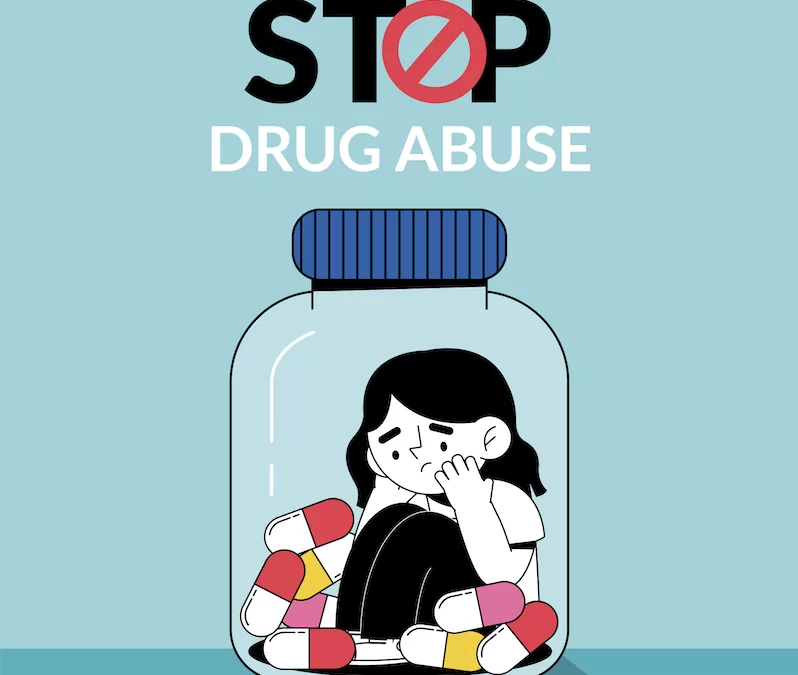Substance Abuse: How bad is addiction in the United States?

Substance abuse and addiction is a tragic experience that directly impacts millions of individuals every year. Substance use disorder impacts more than just the individual though. Addiction affects friends, family, and co-workers in equally important ways.
Those experiencing substance abuse, whether addicted themselves or via the consequences of someone close to them, need support. They need to be shown compassion, patience, and grace. The road to recovery from addiction can be tedious and long. It requires a lot of support from friends, family, and the community.
Substance abuse disorder, commonly referred to as addiction, compels a person to seek out and use alcohol, drugs, etc.… repeatedly despite consequences such as the deterioration of relationships, a decline in physical health, job loss, and threats to the general safety of the community.
Looking at substance use disorder statistics is insightful on a couple of fronts. First, it is difficult to tackle a problem as a society if we are not able to see how prevalent the issue is. Solutions begin with a clear picture of the problem. Second, statistics reveal that substance abuse is pervasive in our society. Millions upon millions of people suffer from it every day.
Knowing this lets those who are suffering know they are not alone on their journey to recovery, and helps case managers work toward the best solutions.
How is substance abuse impacting society and what types of programs are available to help others? Let’s take a look at some important statistics that will paint a picture of the current state of substance abuse in 2024.
General Substance Use Disorder Statistics – Just How Prevalent Is It?
Substance use disorder (SUD) is a broad medical term that covers when someone is unable to function without the use of a substance. This can lead to severe issues and dangerous circumstances, such as drunk driving or being unable to work. SUD can include legal drugs, such as alcohol or marijuana, and illegal drugs, including heroin and cocaine.
The United States National Survey on Drug Use and Health (NSDUH) found that:
- 46.8 million Americans (16.7%) 12 and older have struggled with a substance use disorder in the last year.
- 8 million Americans (2.9%) 23 and older struggled with drug and alcohol abuse at the same time.
- 21.5 million Americans (8.4%) experienced both a mental health and substance abuse disorder.
Some other statistics reveal that:
- 50% of people 12 and older have used illicit drugs at least once.
- The disorders that occur the most are related to marijuana and prescription pain relievers.
- Veterans are more likely to struggle with illegal drug use than the 18+ general American population.
- Only 20% of people in drug treatment are women.
- West Virginia has the highest rate of overdose deaths.
- The costs of drug abuse affect everyone. Substance abuse disorders cost the United States over $400 billion in lost workplace productivity.
If you are someone you know is struggling with substance abuse, call the SAMHSA hotline at 1-800-662-HELP (4357) for referrals to local treatment facilities.
Alcohol Abuse Statistics
Someone who abuses alcohol drinks alcohol too frequently, so much so that they cannot maintain a healthy daily life. To consider someone as a moderate drinker, women must have three drinks a day or less, and men must have four drinks a day or less.
Because alcohol is so prevalent in American culture, it can be difficult to ascertain if someone has a drinking problem or not. However, we must consider these important statistics to remind ourselves of the importance of intervening when we see a friend, family member, or co-worker with an alcohol addiction.
- In the United States, 61.6 million people can be classified as binge drinkers and 17.7 million people can be classified as heavy drinkers.
- 50% of people aged 12 and over have used alcohol in the last month, making it the most popular drug in the US.
- Even though at least 15 million people have Alcohol Use Disorder (AUD), only 8% receive treatment
- 95k people die because of alcohol in the United States every year.
- Alcohol is a contributing factor to 7,334 homicides every year, with 48% of homicide convicts under the influence when they committed murder.
- Alcohol-related crashes incur $44 billion in spending annually in the United States.
- Alcohol is the third leading preventable cause of death in the United States.
If you know someone who has an Alcohol Use Disorder (AUD), offer to attend an Alcoholics Anonymous meeting with them in your area.
Fentanyl and Opioid Abuse Statistics
There is perhaps no more pressing issue related to substance abuse disorders over the past decade than the epidemic of opioid use. The epidemic started in the 1990s, when pharmaceutical companies pushed prescription opioid painkillers onto patients and doctors, downplaying the extreme risks. There have been three waves of the crisis: 1999 to 2010, 2010 to 2013 (where users commonly transitioned to heroin), and then from 2013 on, where synthetic opioids such as fentanyl have skyrocketed in use.
The number of lives that it has impacted in just a short time is nothing short of astronomical. While the US government has increased funding to fight the epidemic in recent years after the Comprehensive Addiction and Recovery Act (2016), there is still a long fight ahead against the prevalence of opioids.
- Deaths from synthetic opioids (typically fentanyl) continue to rise, with 107,941 overdoses reported in 2022
- The rate for synthetic opioids increased by 4.1% from 2021 to 2022, while rates for heroin, natural and semisynthetic opioids, and methadone declined.
- Fentanyl is the deadliest drug in the United States, killing almost 23,000 Americans in the first six months of 2023.
- The Sinaloa and Jalisco cartels operate worldwide criminal networks that produce and deliver fentanyl.
- Fentanyl overdose deaths jumped from 70,000 to 90,000 a year after the COVID-19 pandemic.
- Only one in five adults with Opioid Use Disorder (OUD) receive medications to treat it.
- The medication naloxone prevents death from an opioid overdose if given in time.
If you live in an area with high rates of opioid overdose or know someone who struggles with an addiction, keep naloxone on hand to save their life during an overdose.
Prescription Drug Use in the United States
While many people use prescription drugs to treat common illnesses, it can only take a matter of days or weeks to become addicted to certain medications. There are three main categories of prescription drugs that people tend to become addicted to: opioids/narcotics/pain relievers, depressants, and stimulants. Because these drugs are cheaper and easier to get a hold of, it increases the number of people addicted.
Some eye-opening statistics about prescription drug use in the United States include:
- 107,941 people died from an overdose due to prescription or illicit drugs in 2022.
- 4.9 million adults and children 12 and over abuse prescription stimulants within a year, 18.4% for the first time.
- 5.9 million adults and children 12 and over abuse sedatives, 20.1% for the first time.
- Tennessee leads the states with the highest prescription pain pill abuse, with 4% of the adult population misusing them.
- Women are more often prescribed medication (by 11%), but men are 22.9% more likely to misuse prescriptions.
- Out of all ethnic groups, Hispanic and Caucasian Americans most commonly abuse stimulants.
- Patients aged 57 to 78 are most commonly prescribed medications, and 80% of them have at least one prescription.
If you’re uncertain if you or a loved one is addicted to a prescription drug, take the free online self-assessment at American Addiction Centers (this is not an official diagnosis, merely an educational tool).
Who Is Abusing Drugs in the United States?
While it’s important to know the prevalence of drug use in the United States, it’s also helpful to know the population demographic groups that are most likely to experience substance abuse disorder.
- People aged 18-25 are most likely to abuse drugs
- 33 % of Hispanic/Latino men reported frequent and/or heavy drinking, compared to 12% percent of women.
- For African-American women, treatment facility admissions were most prevalently for cocaine/crack abuse.
- Over 41 million adult women in the US have a mental disorder and/or substance use disorder.
- Men have higher rates of alcohol-related hospitalizations and deaths than women.
- Approximately 90% of people tried cigarettes by the age of 25.
If you need guidance on understanding how to help a friend or family member with an SUD, read the How to Help a Friend with Addiction guide from Partnership to End Addiction.
Aiding in the fight against substance use disorder
Given the unfortunate magnitude of the substance use disorder problem in the United States, there are many non-profit and community-based organizations devoted to helping those most affected. Their noble work helps those who suffer from substance abuse recover and lead healthy, productive lives.
PlanStreet’s case management software is uniquely positioned to suit the needs of substance use agencies and addiction treatment services. Our flexible and customizable platform ensures that your organization will find the right fit of tools and reports that take your work to the next level.
If your organization is ready to take the next step to enhance staff performance, achieve lofty goals, and better serve your community, schedule a time to meet with us and learn how we can help. PlanStreet is ready to get you to the next level.
